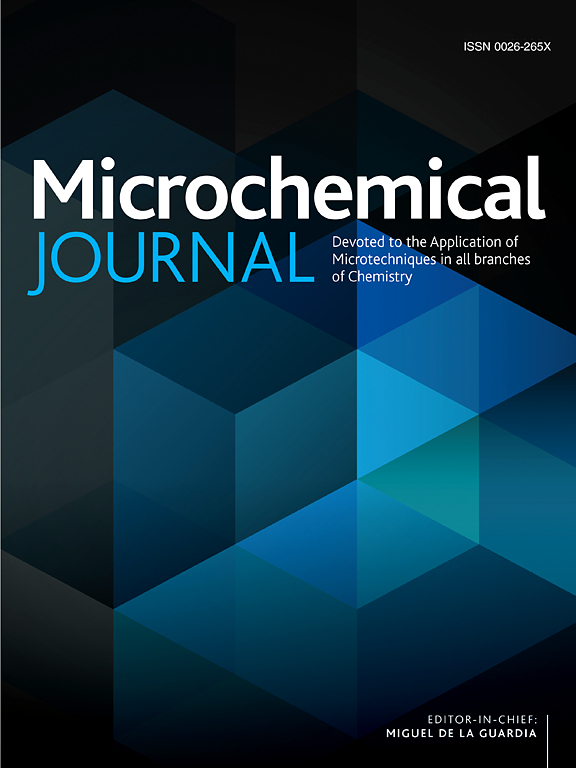A first in class disposable copolymer-graphite platform for electrocatalytic detection of dipicrylamine explosive in wastewater and soil samples
IF 4.9
2区 化学
Q1 CHEMISTRY, ANALYTICAL
引用次数: 0
Abstract
A newly developed, cost-effective, easy-to-prepare, disposable, highly selective, and sensitive electrode was successfully created by simultaneously electropolymerizing tartrazine and ponceau monomers on graphite. This electrode was effectively used to detect the hazardous explosive dipicrylamine in real samples. The fabricated sensor was thoroughly characterized using CV, SEM, EDX, and XPS techniques. It demonstrated a significant calibration sensitivity of , a low limit of detection of 48.7 μg/L (visually 25 μg/L) and broad analytical ranges of 0.16–1.00, 2–10, and 14–50 mg/L. Furthermore, the sensor exhibited noteworthy repeatability (<3.8%), reproducibility (<2.3%), and stability, with a maximum 6.7% signal change after 7 days. To assess accuracy, the method was verificated using certified reference materials, including Elements in Soil (UME EnvCRM 03) and Elements in Wastewater (UME CRM 1204). Additionally, the results of the developed method were statistically compared with HPLC analyses using the CRMs.
一种用于电催化检测废水和土壤样品中二苯胺炸药的一次性共聚物-石墨平台
通过在石墨上同时电聚合酒石黄和ponceau单体,成功制备了一种经济高效、易于制备、一次性、高选择性、高灵敏度的电极。该电极可有效地检测实际样品中的危险炸药二丙胺。利用CV、SEM、EDX和XPS技术对所制备的传感器进行了全面表征。校准灵敏度为53.23μA.L.mg-1。cm-2的低检出限为48.7 μg/L(目测为25 μg/L),分析范围为0.16 ~ 1.00、2 ~ 10和14 ~ 50 mg/L。此外,该传感器具有显著的重复性(<3.8%)、再现性(<2.3%)和稳定性,7天后信号变化最大6.7%。为了评估该方法的准确性,使用经认证的标准物质进行验证,包括土壤元素(UME EnvCRM 03)和废水元素(UME CRM 1204)。并将该方法与HPLC分析结果进行了统计比较。
本文章由计算机程序翻译,如有差异,请以英文原文为准。
求助全文
约1分钟内获得全文
求助全文
来源期刊

Microchemical Journal
化学-分析化学
CiteScore
8.70
自引率
8.30%
发文量
1131
审稿时长
1.9 months
期刊介绍:
The Microchemical Journal is a peer reviewed journal devoted to all aspects and phases of analytical chemistry and chemical analysis. The Microchemical Journal publishes articles which are at the forefront of modern analytical chemistry and cover innovations in the techniques to the finest possible limits. This includes fundamental aspects, instrumentation, new developments, innovative and novel methods and applications including environmental and clinical field.
Traditional classical analytical methods such as spectrophotometry and titrimetry as well as established instrumentation methods such as flame and graphite furnace atomic absorption spectrometry, gas chromatography, and modified glassy or carbon electrode electrochemical methods will be considered, provided they show significant improvements and novelty compared to the established methods.
 求助内容:
求助内容: 应助结果提醒方式:
应助结果提醒方式:


